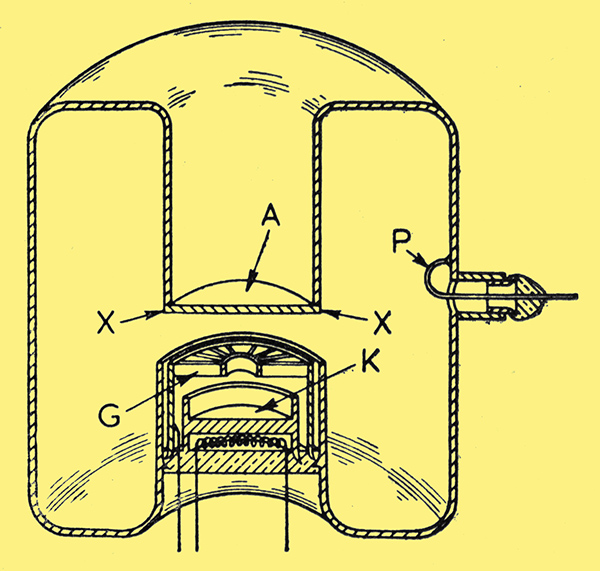|

Resonator valve construction.
The valve electrodes are enclosed in an evacuated metal casing which forms a high-Q circuit of the resonant-cavity type. This construction is said to be better adapted to handle high power than the ordinary type of velocity-modulation valve, in which the resonant electrodes are mounted inside the bulb.
As shown, the resonant metal casing is a hollow toroid with a circumferential gap in the inner wall, the usual control electrodes being mounted inside the inner wall of the toroid. Other alternative arrangements are described, the particular one illustrated being distinguished by the fact that only one glass seal is necessary. The indirectly heated cathode K and the grid G are both mounted on the glass seal, and co-operate with an anode A which forms part of the resonant casing. The grid is capacity-coupled by its close proximity to the outer casing. The anode A may be replaced by a metallic cylinder which fits inside the upper hollow space and is held in place by a glass seal around the periphery XX. The output is drawn off from the resonant cavity by a probe P.
Standard Telephones and Cables, Ltd. (Assignees of C V Litton). Convention date (USA) May 11th, 1939. No. 548,119.
|